14 Different Types of Software Testing
- February 19
- 13 min

A web development framework consists of tools, libraries, and guidelines designed to facilitate the creation, maintenance, and growth of websites or web applications. It provides a standardized approach to software development and offers a structured method for crafting reliable and efficient applications. Utilizing these frameworks enhances developer productivity by streamlining the process, allowing them to focus on feature development rather than building from scratch. Typically, frameworks include essential components that enable rapid construction of dynamic and interactive applications.
Web development frameworks are essential tools for building dynamic and efficient web applications. They are generally divided into two categories: front-end and back-end.
Front-end frameworks play a crucial role in crafting user interfaces for web applications. They offer ready-made components and libraries, simplifying the process of designing interactive layouts. With capabilities like templating, state management, and routing, these frameworks streamline the development of client-side applications.
Popular options include:
Utilizing front-end frameworks also guarantees responsive design across various devices. They facilitate smooth user interactions while maintaining the flexibility of the application’s architecture.
Back-end frameworks play a crucial role in web development by focusing on server-side tasks. They empower developers to craft the logic and functionalities essential for robust applications, such as handling database operations, authenticating users, and performing server-side processing. These capabilities are fundamental for creating scalable web applications.
Noteworthy examples include:
Beyond these core functions, back-end frameworks also support microservices architecture and server-side rendering (SSR), enhancing application performance and scalability.
While established frameworks like React, Angular, and Vue.js continue to dominate the market, emerging technologies such as Svelte and Astro are gaining traction due to their innovative approaches and performance optimizations. However, due to their relatively smaller community support and evolving ecosystems, they have not yet been included in this top 9 ranking for 2025.
Front-end web development frameworks play an essential role in creating dynamic and responsive user interfaces. They’re versatile, catering to everything from enterprise applications to single-page apps, enhancing both performance and scalability. With ready-made components at your disposal, these frameworks streamline the development process, greatly increasing developer productivity. They offer features such as templating, state management, and routing, which simplify the creation of client-side applications. These frameworks also ensure that designs adapt seamlessly to various devices while providing flexibility in how applications are structured.
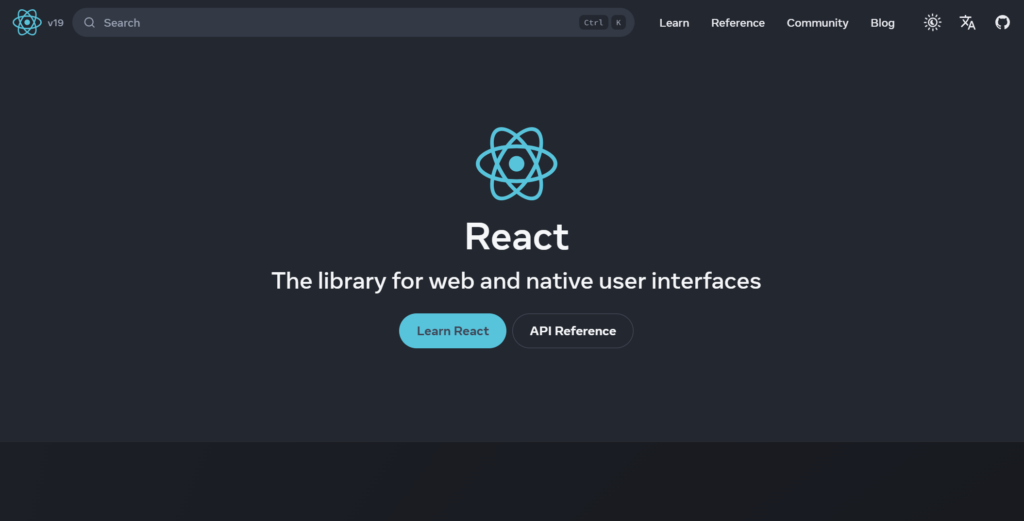
React, a widely-used front-end library, is revolutionizing web and mobile app development. Although not a full-fledged framework, its component-based architecture promotes efficient code reuse and facilitates the creation of interactive interfaces, making it an ideal choice for single-page applications (SPAs). React is often paired with other libraries (e.g., React Router for routing) to achieve framework-like functionality.
Consequently, developers can focus on crafting feature-packed applications without being bogged down by fundamental issues.
Additionally, React’s adaptability guarantees that applications remain scalable and straightforward to manage as project requirements evolve over time.
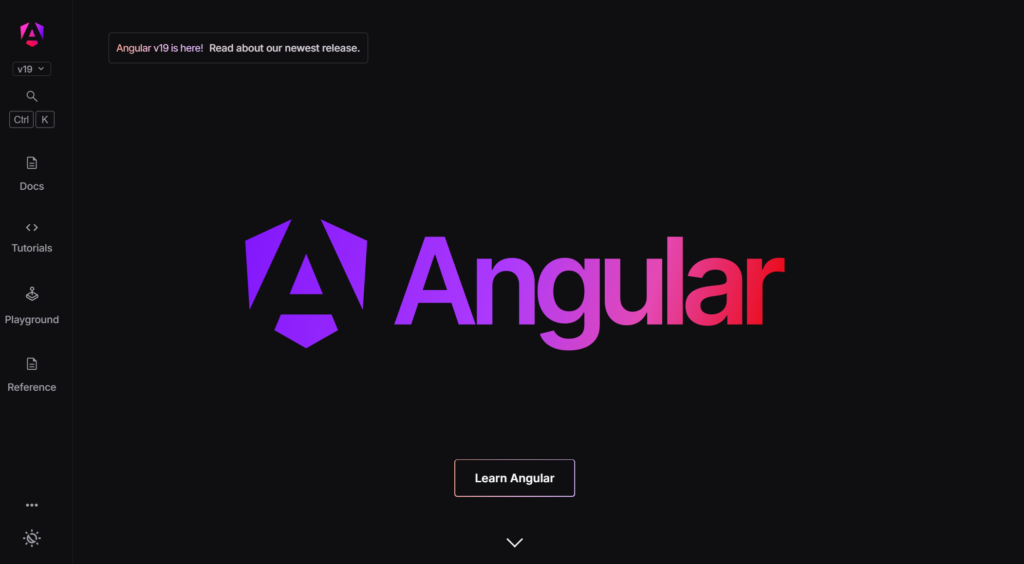
Angular is a powerful front-end framework perfect for building dynamic web applications. One of its most impressive features is two-way data binding, which ensures that any change in the user interface immediately reflects in the data model and vice versa. This capability is especially beneficial for real-time applications where swift updates driven by users are essential.
One of Angular’s significant advantages lies in its modular design. It enables developers to divide large applications into smaller, more manageable modules, enhancing both maintainability and scalability. Furthermore, dependency injection streamlines code management by promoting reusable components and minimizing redundancy.
Angular also supports server-side rendering (SSR), boosting performance with quicker initial page loads and better search engine optimization (SEO). It comes equipped with built-in testing tools to facilitate comprehensive application development processes.
The framework’s organized approach makes it ideal for enterprise-level applications, backed by robust community support that provides valuable resources and solutions. Developers appreciate Angular’s clear documentation as it aids efficient problem-solving and learning.
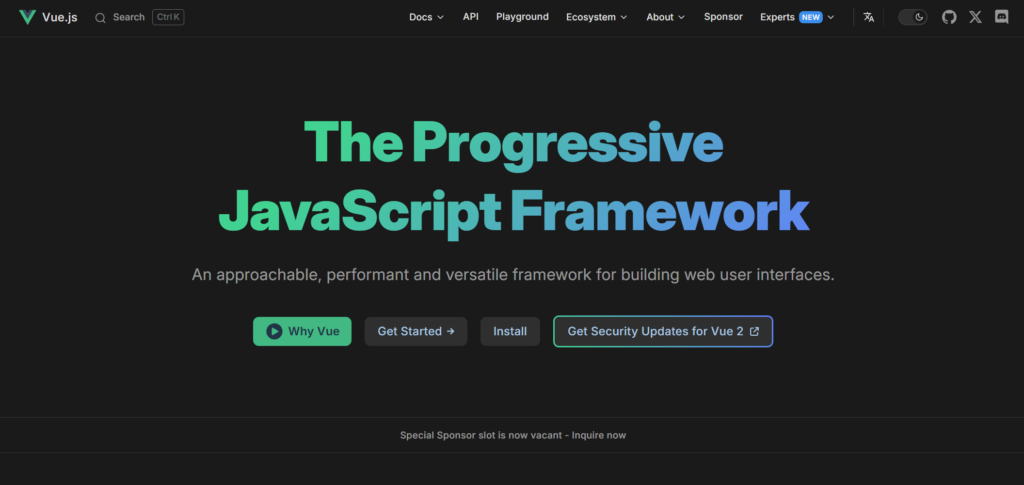
Vue.js is a front-end framework designed for crafting user interfaces, renowned for its simplicity and adaptability. It allows developers to incrementally incorporate features as required, making it ideal for developing interactive web applications. This adaptability also enables Vue.js to integrate seamlessly with other projects or technologies. The framework emphasizes customization and extensibility, allowing developers to tailor their applications to specific requirements. Its component-based architecture simplifies development through code reuse and modular design. Additionally, Vue.js offers tools for state management and routing, essential elements for modern client-side applications. Being lightweight ensures that Vue.js delivers fast performance while maintaining high-quality user experiences. Backed by a robust community, it provides abundant documentation and resources that enhance productivity by addressing common development challenges.
Back-end web development frameworks play a vital role in managing server-side processes, handling database interactions, and implementing application logic. These tools offer key features that guarantee robust performance and security when developing scalable web applications. By leveraging these frameworks, developers can effectively craft the intricate functionalities required in today’s demanding web landscapes.
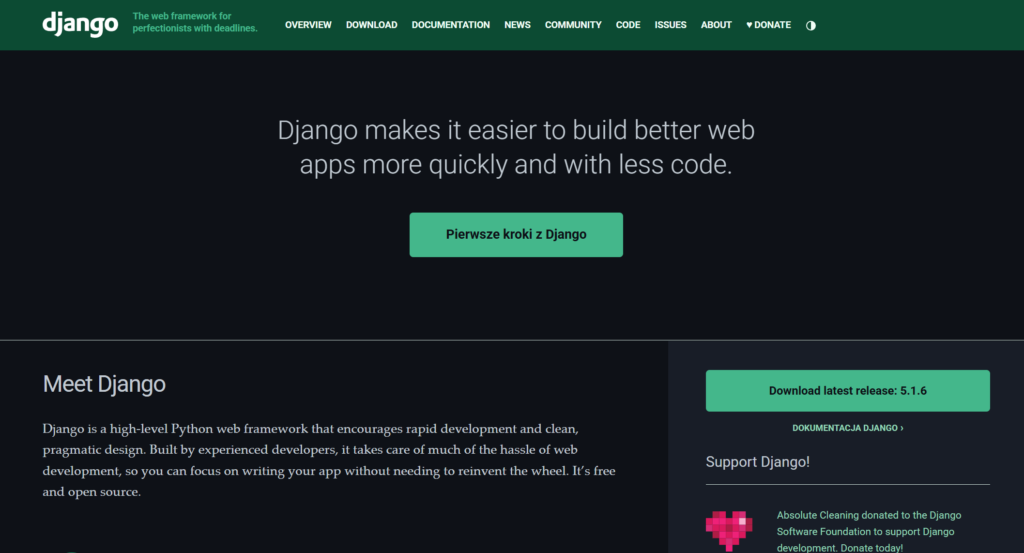
Django is a popular back-end framework renowned for its comprehensive “batteries-included” approach. By adhering to the Model-View-Template (MVT) design pattern – a variation of MVC specifically tailored for Django – it provides numerous built-in features that facilitate rapid and secure development. For instance, Django minimizes reliance on external libraries by managing tasks like authentication, URL routing, and database schema migrations internally.
The MVT structure enhances code organization by clearly separating data models from business logic and presentation layers (templates). Moreover, Django places a strong emphasis on security, safeguarding against common threats such as SQL injection and cross-site scripting. This makes it an excellent choice for swiftly creating secure web applications.
Developers appreciate Django’s extensive documentation and active community support, which significantly enhance productivity by providing solutions to challenges and optimizing app performance. Ultimately, Django streamlines complex web development while maintaining high standards of quality and reliability.
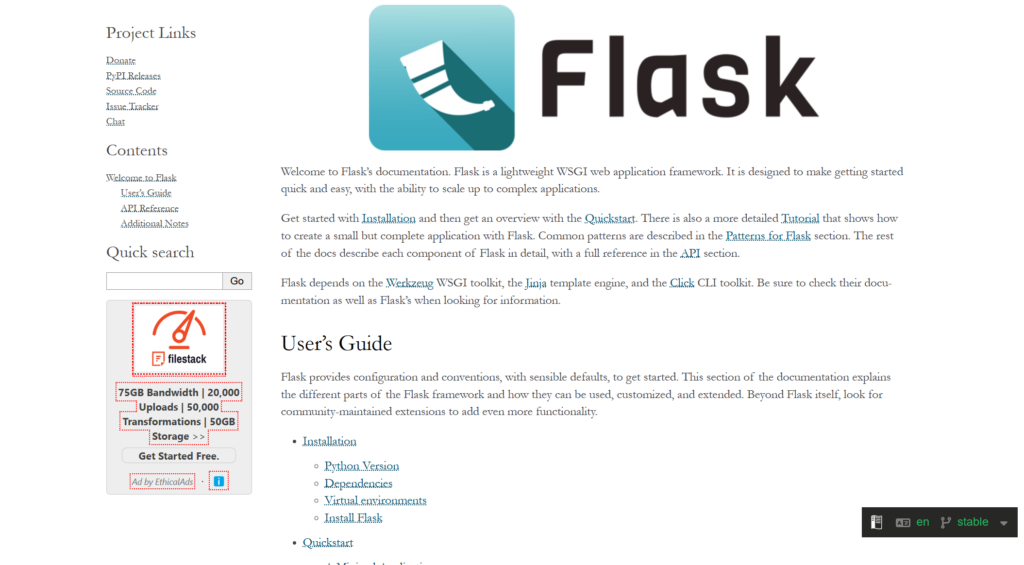
Flask, a micro web framework for Python, is celebrated for its lightweight nature and user-friendly approach. While it’s often associated with small to medium-sized applications and APIs, Flask can also power larger projects when combined with extensions like SQLAlchemy for database management or Celery for task scheduling. Its minimalist design empowers developers to select only the necessary components, granting them significant freedom in application design.
The framework’s appeal lies in its ability to boost developer productivity by eliminating unnecessary complexities. Flask encourages modular code organization, promoting clean and efficient codebases. It supports rapid development cycles without compromising functionality or performance.
As a back-end framework, Flask excels at handling server-side operations while maintaining a straightforward architecture. This quality makes it a versatile choice for projects requiring quick deployment or regular updates. By offering essential tools without overwhelming developers with excessive features, Flask remains a popular option for those seeking an effective and flexible web development solution.
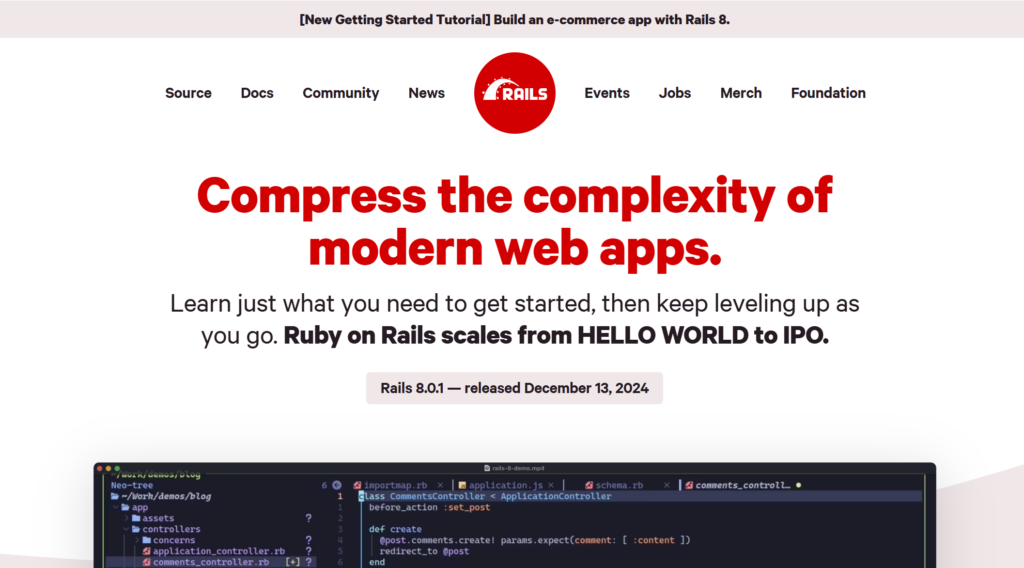
Ruby on Rails is a back-end framework that simplifies web application development by emphasizing convention over configuration. Built on the Model-View-Controller (MVC) pattern, it enables developers to create applications swiftly and effectively, particularly those reliant on databases. One standout feature of Ruby on Rails is its implementation of Object-Relational Mapping (ORM), which eases database interactions by allowing the use of Ruby objects instead of traditional SQL queries. This MVC structure ensures clean separation of concerns, making the codebase more maintainable and scalable.
The framework’s philosophy enhances developer productivity by minimizing decisions on trivial configurations, thereby enabling a stronger focus on feature creation. By establishing conventions for file organization, coding styles, and naming guidelines, Ruby on Rails reduces the complexity typically encountered in project setups.
Ruby on Rails accelerates development through tools like scaffolding, which automatically generates essential code structures for new applications. This significantly speeds up initial development phases. Additionally, its vibrant community offers a wealth of resources, plugins, and libraries that extend the framework’s functionality and address common challenges in web development.
Ruby on Rails remains popular among developers aiming to deliver effective web applications quickly while maintaining clean code and smooth workflows.
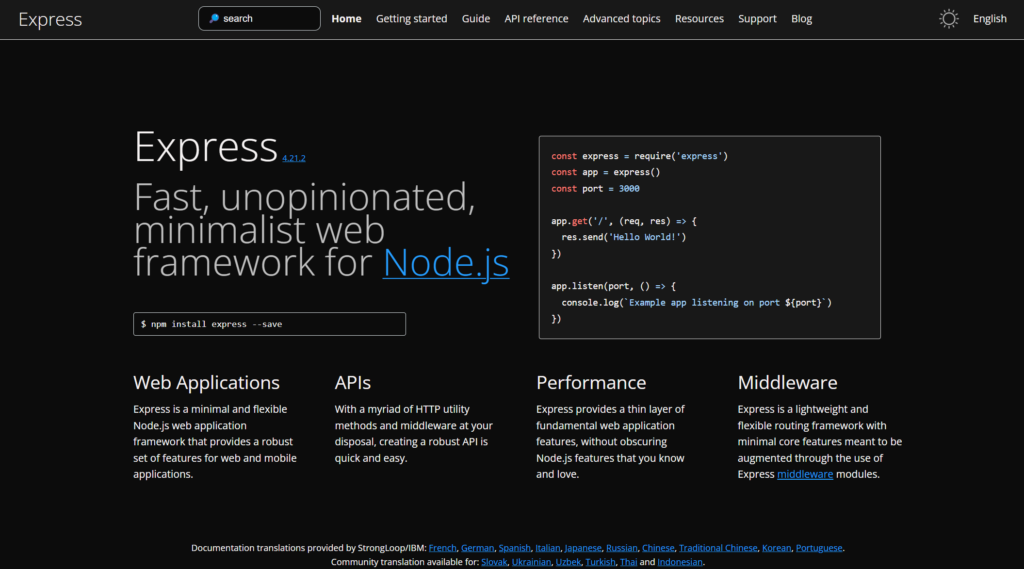
Express.js is a powerful framework that works alongside Node.js to create robust and scalable web applications. It’s renowned for its minimalist design, which remains flexible enough to cater to a variety of use cases, including building high-performance RESTful APIs and enabling server-side rendering (SSR) when integrated with additional tools.
Its lightweight nature facilitates rapid development while ensuring the scalability of applications—a vital feature given the increasing traffic modern web apps encounter. Moreover, Express.js seamlessly integrates with various middleware options, enhancing functionality without compromising performance.
The framework boasts these features, providing developers with tools to swiftly resolve issues and streamline application deployment and maintenance. In essence, Express.js empowers developers by offering an efficient approach within the Node.js ecosystem for crafting scalable web applications across diverse use cases.
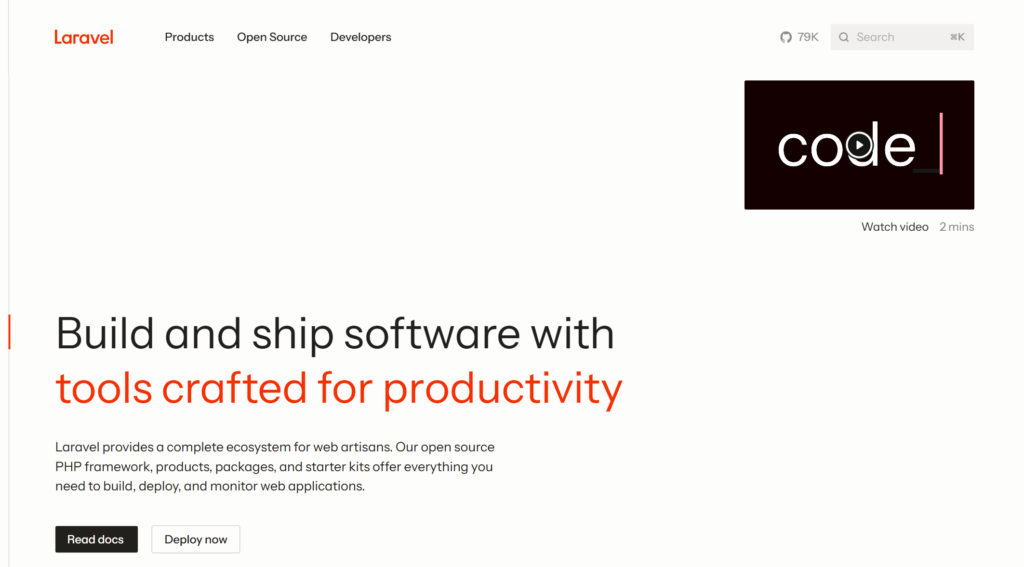
Laravel is a PHP framework crafted to streamline back-end development, enhancing both ease and efficiency. It aids developers by simplifying routine tasks, thereby increasing productivity. With its clean syntax and abundant features, Laravel makes web app creation a more straightforward process. Key functionalities include:
These are essential components for building robust applications.
What attracts developers to Laravel is its ability to handle these tasks seamlessly while offering extensive customization options for projects. Moreover, the detailed documentation and vibrant community support further elevate its value as a tool for PHP development.
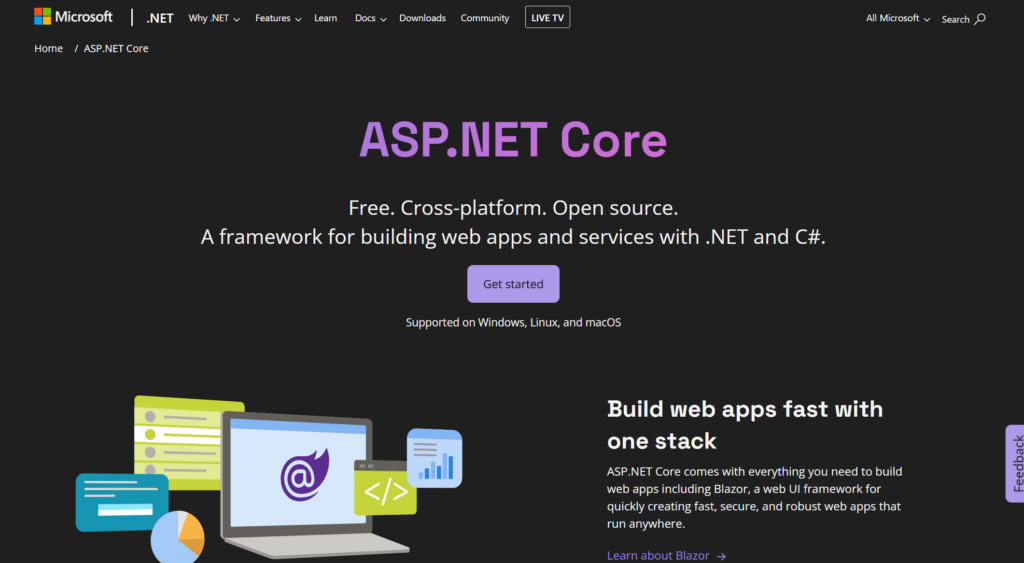
ASP.NET Core is a versatile framework ideal for crafting web apps and services. It shines in cross-platform compatibility, enabling developers to build cutting-edge applications that function seamlessly across different environments. With performance as a central feature, it’s perfect for high-traffic websites where speed is crucial.
Security stands out as one of ASP.NET Core’s key advantages. Equipped with tools to combat threats like SQL injection and cross-site scripting, it offers a robust choice for developing secure web services.
Furthermore, ASP.NET Core excels in cloud application development by integrating smoothly with platforms like Azure. This capability allows developers to create scalable applications that efficiently handle varying workloads.
Additionally, the ASP.NET ecosystem is expanding with the rise of Blazor, a framework for building interactive web UIs using C#. Blazor’s integration with ASP.NET Core provides developers with a modern, component-based approach to crafting rich web experiences.
The framework is backed by comprehensive documentation and an active community, offering valuable support for troubleshooting and project enhancement. Its modular design grants flexibility, enabling developers to tailor applications precisely to their needs.
Selecting an appropriate web development framework is crucial for a project’s success. Here’s what to consider:
If you’re ready to bring your web project to life but unsure which framework suits your needs, our team is here to help. Get in touch with us today to discuss your goals, and let’s find the perfect solution together!
